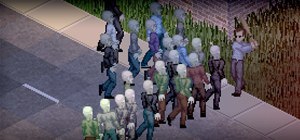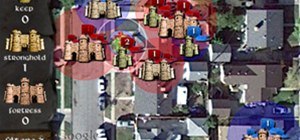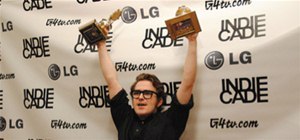The small size of most indie game development teams is a strength, but also a weakness. It allows them to take risks and explore revolutionary ideas that a larger company could never justify to its shareholders, but also means they must navigate the game development labyrinth with minimal help, taking much longer than those with big development teams. Some of the most exciting indie games currently in development have been so for years, or look like they will be.
I played three such games at PAX, and each one was deceptively simple and fun, but also unique like so many other great indie games. While their release dates are unknown and may be far (or even far, far) away, they are already winning awards, garnering massive hype, and breaking ground on the future of the medium.
Fez
Two-man indie developer Polytron Corporation has been working on Fez for five years, and it has been playable at dozens of previous conventions. But yesterday was my first go at it, and Fez (like both of the games below) is more than a description can convey.
At first glance, it looks like a simple 2D platformer. But pressing either of the Xbox 360 trigger buttons will cause the screen to rotate 90 degrees, revealing a completely different world on the other side of the first. The crux of the game is using this feature to navigate the deceptively simple but incredibly complex game world. To be extremely reductive, it's everything that Super Paper Mario could have been. To be clear, I did enjoy Super Paper Mario. It just didn't realize the potential of the rotation mechanic like Fez does.
A big part of the reason it has taken so long to make—and still doesn't have a release date—is the sheer complexity of creating levels that function from any side. Every pixel has to be a cube rather than a square, and that two men (one of whom is both artist and designer) are conceiving and creating all of that content justifies the long dev time. To make it even more tantalizing, artist and designer Philip Fish said during a panel discussion at PAX that the true nature and extent of the game is much greater than what anyone has seen so far.
Spy Party
Spy Party developer Chris Hecker is working alone, which is more common now than it was five years ago when indie game development was not at its current popularity. But it's still a Herculean task. And the game is a whole new take on what two-player gameplay can be.
Currently, only two gamers can play, although there are plans for more multi- and single-player modes. One player is the spy, the other the sniper. The spy is at a fancy dress party and has a series of tasks to complete such as planting a bug on an ambassador or stealing a statue. They can choose from a number of different appearances before the game starts, and must try to accomplish their tasks as inconspicuously as possible. That's because the other player is a sniper positioned outside the party looking in through conveniently large windows. Their only goal? Terminate the spy.
The game functions like a reverse Turing Test—the spy has to try and act as indistinguishable from their AI-controlled fellow partygoers as possible, while the sniper has to deduce via observation which entity is not a computer, but their opponent. Each player needs their own screen, which means local multiplayer will be complicated (Wii U controllers would help), but it also represents a new paradigm in asynchronous gameplay, a kind based not on time, but on role.
Monaco
One-man game developer Pocketwatch Games, aka Andy Schatz, has enjoyed some success in the past decade with a pair of in-depth wildlife simulators. But in 2003, he designed the game that today is called Monaco, and might be the best of the growing number of excellent 4-player local co-op games available on XBLA.
In each level, four players work together to heist valuables from a large building. The perspective is top-down, and the graphics are elegant, but simple pixel art mixed with chalk maps. Weapons and other tools for killing enemies are scarce, which means success depends on stealth and careful planning. Players must navigate the building using the map and evade, kill, or otherwise befuddle enemies when they appear, sabotaging alarms and other automatic security measures and collecting power-ups and bonus money along the way.
I was playing with three random people who didn't know how to play in a deafeningly loud room, and it was still a fun and rewarding cooperative experience. Played by four friends who all know what they're doing in a darkened living room with plenty of salty snacks, it should be leagues better. That puts it in a very select company in a console generation that has all but given up on local multiplayer on the AAA side, and is yet another reason that indie games are the future.
Just updated your iPhone? You'll find new emoji, enhanced security, podcast transcripts, Apple Cash virtual numbers, and other useful features. There are even new additions hidden within Safari. Find out what's new and changed on your iPhone with the iOS 17.4 update.






























Be the First to Comment
Share Your Thoughts